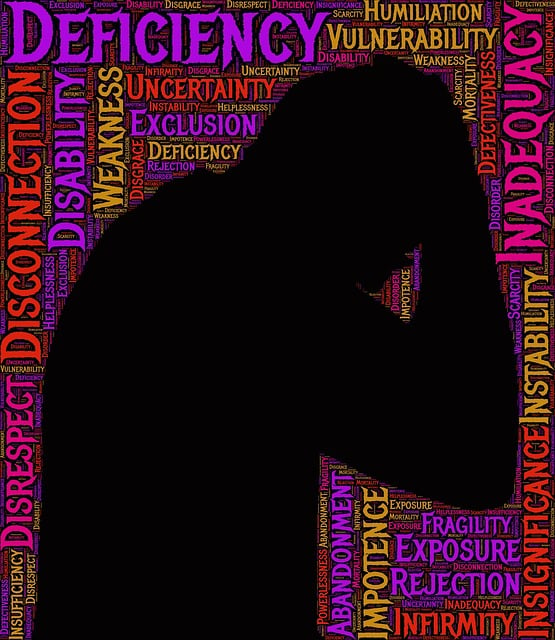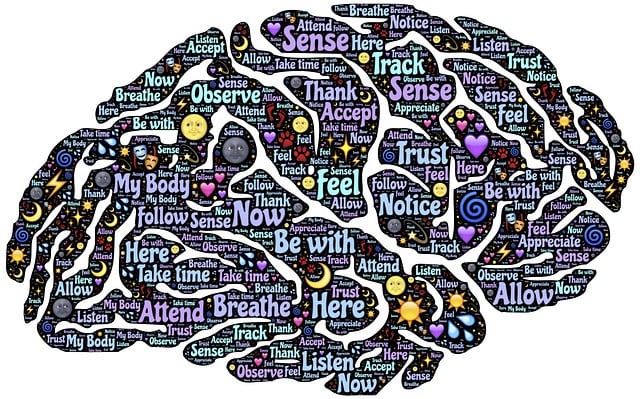Mental health professionals at Greenwood Village Trauma Therapy face high risks of burnout and stress due to emotionally taxing work, including exposure to traumatic stories, which can lead to secondary trauma. To mitigate these risks, they employ strategies like mental health awareness, stress management techniques, and tailored trauma support services. They proactively assess and manage hazards within therapy environments, focusing on client and professional well-being. Using methods such as structured interviews and cultural sensitivity, they identify and mitigate risks like suicide ideation and violent behavior. Clear communication, building resilience, and self-care for professionals are key to effective support and preventing burnout. Greenwood Village Trauma Therapy & Risk Management leads in mental health care by integrating comprehensive risk assessment and management, fostering a culture of crisis intervention expertise for enhanced patient outcomes.
Mental health professionals (MHPs) face unique risks in their daily practice, from exposure to traumatic narratives to potential self-care challenges. Understanding these hazards is crucial for ensuring the well-being and effectiveness of MHPs. This article explores comprehensive risk assessment strategies tailored specifically for this critical role. We delve into identifying risks within therapy settings, employing effective tools, implementing mitigation plans, and offering a case study on Greenwood Village Trauma Therapy’s successful risk management approach.
- Understanding Mental Health Professional's Unique Risks
- Identifying Potential Hazards in Therapy Settings
- Essential Risk Assessment Tools and Techniques
- Strategies for Mitigating and Managing Risks
- Case Studies: Greenwood Village Trauma Therapy & Risk Management
Understanding Mental Health Professional's Unique Risks

Mental health professionals, despite their noble mission to help others, face unique risks that can impact their well-being. This population is particularly susceptible to burnout and stress due to the emotionally demanding nature of their work. They often encounter complex and challenging cases, including individuals experiencing severe trauma, which can take a toll on their mental resilience over time. The constant exposure to traumatic stories and distressing narratives can lead to secondary trauma, where professionals experience symptoms similar to those of their clients. This is especially relevant in Greenwood Village Trauma Therapy settings, where the focus is on helping individuals heal from deep-seated psychological wounds.
Addressing these risks is crucial for maintaining a healthy workforce and ensuring effective client care. Mental health awareness and stress management techniques are essential tools in mitigating these challenges. Providing trauma support services tailored to professionals can offer much-needed respite and promote resilience. By recognizing and addressing these unique risks, mental health practitioners can continue their vital work with renewed energy and a deeper sense of fulfillment.
Identifying Potential Hazards in Therapy Settings

In the therapeutic environment, mental health professionals must be vigilant in identifying potential hazards that could impact their well-being and that of their clients. Greenwood Village Trauma Therapy, a renowned center for specialized care, recognizes that therapy settings are complex ecosystems where various risks may lurk. These range from emotional triggers related to past traumas to interpersonal dynamics within the therapeutic relationship itself. For instance, therapists working with individuals who have experienced complex traumatic stress disorders (CTSD) need to be attuned to their own potential triggers and ensure a safe, supportive environment free from retraumatization.
Beyond individual therapist vulnerabilities, organizational factors also play a significant role in risk assessment for mental health professionals. Adequate resources, clear crisis management protocols, and ongoing staff training on trauma support services are essential. By addressing these potential hazards proactively, mental health professionals can foster a culture of resilience, ensuring that both they and their clients can navigate the therapeutic journey with greater peace of mind and improved mental wellness.
Essential Risk Assessment Tools and Techniques

In the field of mental health care, particularly within Greenwood Village Trauma Therapy, risk assessment is an indispensable tool for ensuring client safety and fostering effective treatment outcomes. Professionals in this domain employ a variety of techniques to identify potential risks, predict hazardous situations, and proactively develop mitigation strategies. These include structured clinical interviews, psychological assessments, and validated risk prediction models tailored to address specific challenges like suicide ideation, self-harm, or violent behavior.
Beyond these foundational tools, resilience building plays a crucial role in risk assessment. Mental health professionals also leverage cultural sensitivity in mental healthcare practice to account for individual differences and contextual factors that might influence risk factors. By integrating Mind Over Matter principles, therapists empower clients with coping mechanisms and adaptive strategies, enhancing their inherent resilience and enabling them to navigate challenging situations more effectively.
Strategies for Mitigating and Managing Risks

Mental health professionals, like those at Greenwood Village Trauma Therapy, encounter a unique set of challenges that demand proactive risk management. Strategies for mitigating and managing these risks go beyond typical workplace safety measures. Effective communication strategies are paramount; clear, empathetic, and transparent dialogue with clients fosters trust and enables early identification of potential triggers or escalating issues.
Building resilience is another crucial component. This involves not only developing robust coping mechanisms for professionals themselves but also integrating trauma-informed practices into therapy sessions to empower clients with tools to navigate their own challenges. Incorporating self-care routine development for better mental health, including scheduled breaks, mindfulness practices, and healthy boundaries, becomes essential in preventing burnout and maintaining the emotional resilience needed to support others effectively.
Case Studies: Greenwood Village Trauma Therapy & Risk Management

Greenwood Village Trauma Therapy & Risk Management is a prime example of a mental health organization prioritizing comprehensive risk assessment and management. Through diligent case studies, they’ve illuminated critical aspects of ensuring professional well-being in high-stress environments. By implementing robust self-care practices and stress reduction methods, Greenwood Village has fostered a culture where crisis intervention guidance becomes an integral part of their service delivery model.
The therapy village’s approach underscores the importance of integrating mental health professionals’ safety into every level of care. Their case studies reveal effective strategies for navigating complex trauma scenarios, ultimately enhancing both patient outcomes and provider resilience. This dedication to risk assessment and management not only mitigates potential hazards but also empowers mental health professionals to deliver their services with enhanced confidence and compassion.
Mental health professionals face distinct risks in their line of work, making comprehensive risk assessment a non-negotiable practice. By understanding these unique challenges and employing effective tools and strategies, as demonstrated by Greenwood Village Trauma Therapy’s successful risk management approach, practitioners can create safer therapeutic environments. Regularly reviewing potential hazards and implementing mitigation tactics are key to ensuring the well-being of both professionals and clients, fostering a healthier and more resilient mental health care ecosystem.














